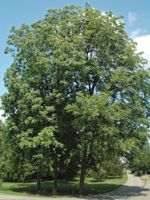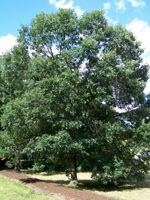Mon-Fri 9am - 5pm Mountain time
Hardy Pecan vs Swamp White Oak
Carya illinoinensis
Quercus bicolor
NOT AVAILABLE THIS SEASON - MIGHT RETURN
NOT AVAILABLE THIS SEASON - MIGHT RETURN
Hardy Pecan trees are known for their edible nuts that ripen in late autumn. They can be eaten raw or cooked and can be used in a wide range of baked goods. If stored properly in a cool, dry location, they can be kept for up to 6 months in their shell. Trees tend to bear nuts at maturity, which occurs around 6 -10 years. The size and form of this tree also makes it a great shade or feature tree for your landscape.
For nut production, it is recommended that at least 2-3 are planted so that cross pollination can occur. In colder areas it is likely that nut production will be limited, especially in locations with late frosts and shorter growing seasons.
If exposed to high winds, Hardy Pecan is known to lose branches, but these can be used as firewood, or to smoke foods with a hickory flavour. Finding seed or seedlings of this tree is rare in Canada.
Note: plant this tree once. It will not respond well to transplanting.
The Swamp White Oak is a medium-sized deciduous tree native to North America. It is commonly found in swamps, lowlands, floodplains, and near streams and lakes. The leaves are two-toned, green on top and silvery-white on the undersides, adding to the visual appeal of this popular shade tree.
In the fall, the Swamp White Oak produces acorns which are an important food source for wildlife. It also provides a habitat for the larvae of many butterfly and moth species, playing an important ecological role. Although its growth is slow in the first few years, once the roots are established, it can achieve faster annual growth.
Hardy Pecan Quick Facts
Swamp White Oak Quick Facts
Toxicity: mildly toxic to humans, cats, and dogs

